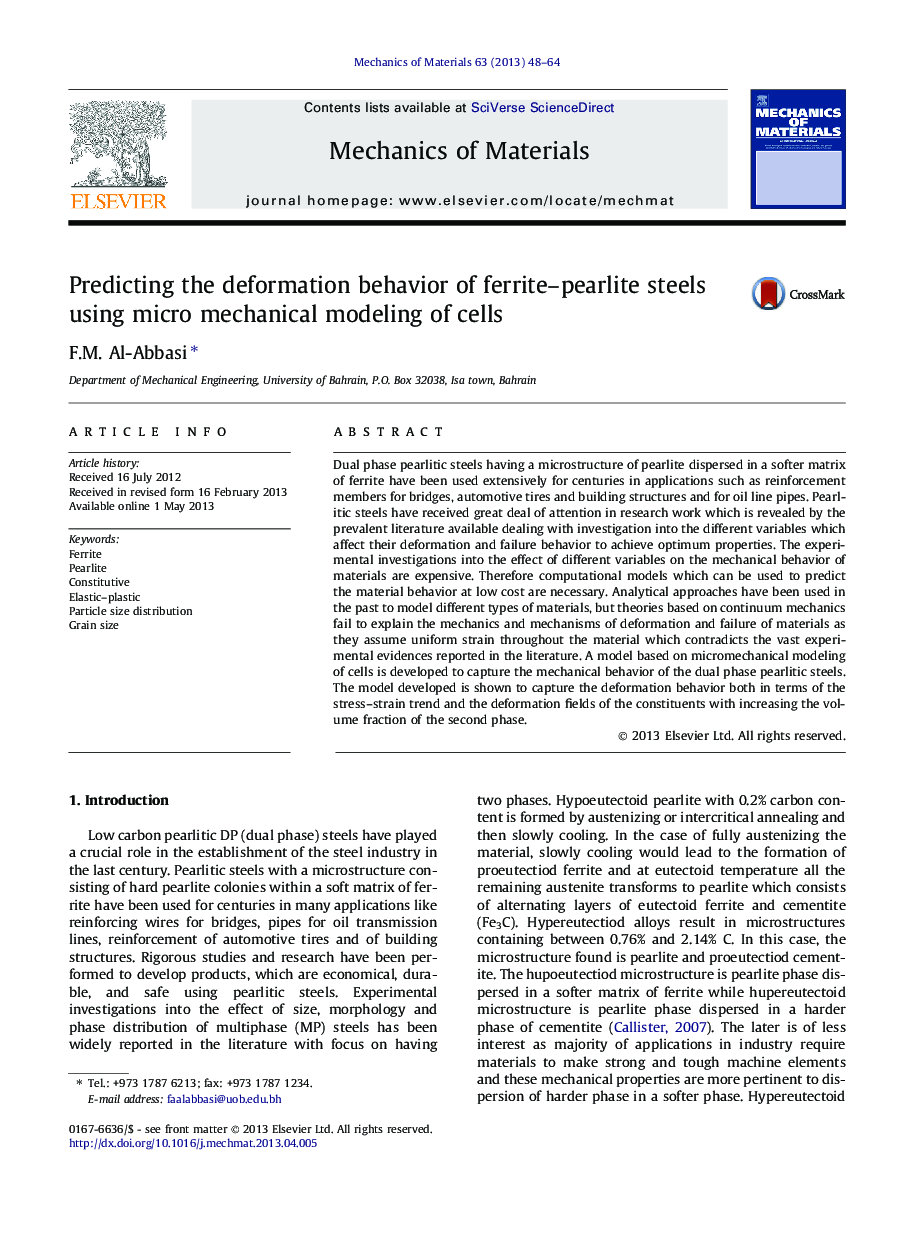| Article ID | Journal | Published Year | Pages | File Type |
|---|---|---|---|---|
| 802842 | Mechanics of Materials | 2013 | 17 Pages |
•Modeling of cells is used to characterize the behavior of pearlitic steels.•M-SHA model is shown to capture the deformation behavior well.•Both stress–strain trend and deformation fields of the constituents are captured.•Behavior is captured with increasing the volume fraction of the harder phase.
Dual phase pearlitic steels having a microstructure of pearlite dispersed in a softer matrix of ferrite have been used extensively for centuries in applications such as reinforcement members for bridges, automotive tires and building structures and for oil line pipes. Pearlitic steels have received great deal of attention in research work which is revealed by the prevalent literature available dealing with investigation into the different variables which affect their deformation and failure behavior to achieve optimum properties. The experimental investigations into the effect of different variables on the mechanical behavior of materials are expensive. Therefore computational models which can be used to predict the material behavior at low cost are necessary. Analytical approaches have been used in the past to model different types of materials, but theories based on continuum mechanics fail to explain the mechanics and mechanisms of deformation and failure of materials as they assume uniform strain throughout the material which contradicts the vast experimental evidences reported in the literature. A model based on micromechanical modeling of cells is developed to capture the mechanical behavior of the dual phase pearlitic steels. The model developed is shown to capture the deformation behavior both in terms of the stress–strain trend and the deformation fields of the constituents with increasing the volume fraction of the second phase.
